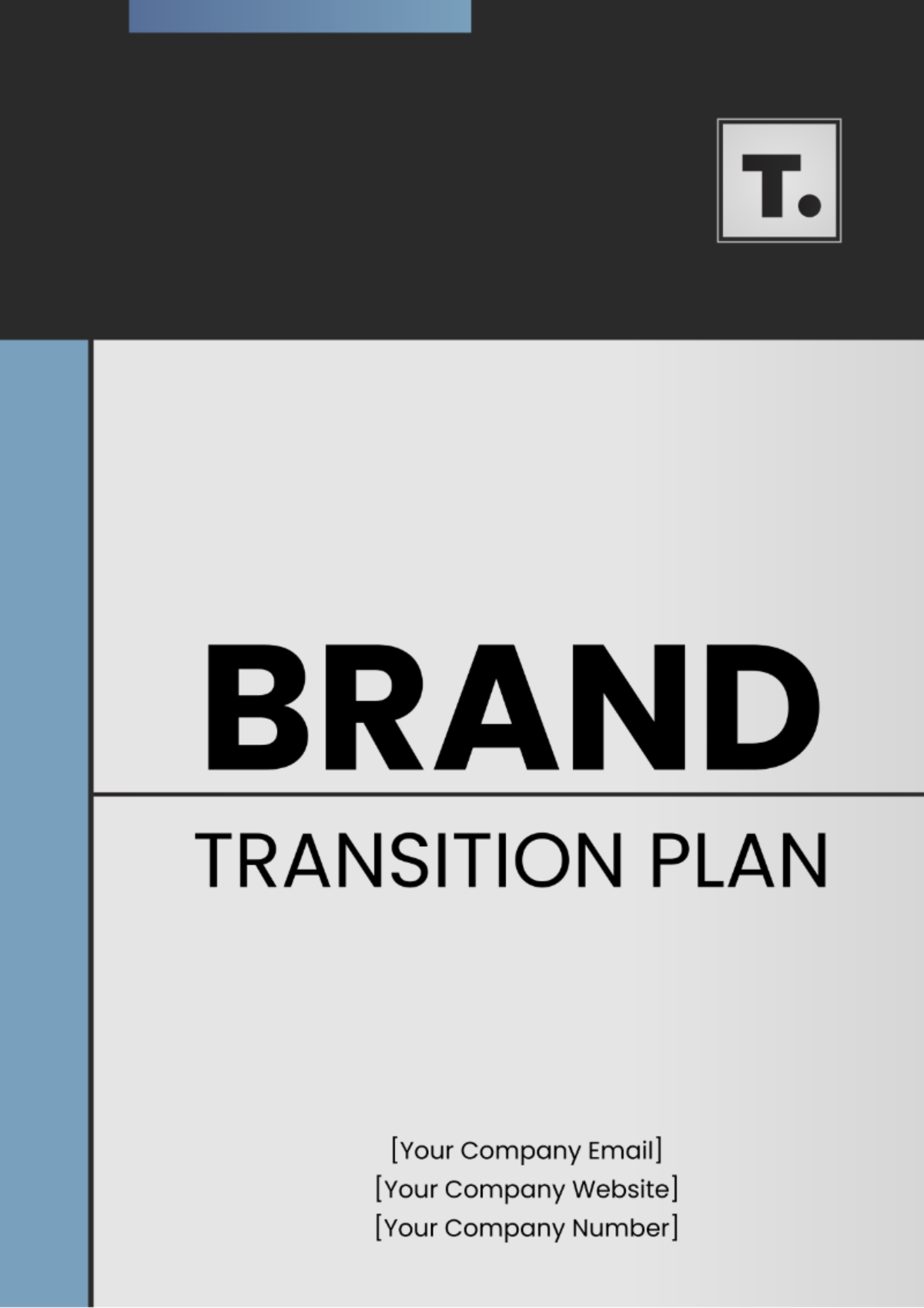Marketing Branding Standard Operating Procedure (SOP)
Introduction
In today's dynamic business landscape, branding is not just about having an identifiable logo or a catchy tagline. It's about creating a unique identity, fostering trust with consumers, and setting a company apart from its competitors. At [Your Company Name], we recognize the profound importance of a cohesive and impactful brand presence. This SOP elucidates the processes and guidelines to ensure that our brand is consistently and effectively represented across all channels, mediums, and touchpoints.
Purpose: The main purpose of this SOP is to:
Establish a clear and cohesive brand identity for the company that resonates with our target audience and stakeholders.
Provide a framework for ensuring brand consistency across various mediums, be it digital platforms, print materials, partnerships, or sponsorships.
Create an environment where every team member, irrespective of their role, understands, and champions our brand guidelines.
Address and rectify any inconsistencies in branding promptly and effectively, thus ensuring a reliable and trustworthy brand image in the market.
Foster a culture where brand-related decisions are data-driven, transparent, and in alignment with the company's broader business objectives.
Scope
This SOP is pivotal in governing and streamlining the myriad facets of branding for the company. Its application extends, but is not limited to:
1. Digital Realm: Encompassing our official websites, mobile apps, social media platforms, email communications, digital advertisements, and any other online touchpoints that carry our brand identity.
2. Physical Materials: Covering all tangible representations of our brand, such as brochures, business cards, banners, promotional materials, packaging, and branded merchandise.
3. Internal Communications: Ensuring that even within our organization, every piece of communication, be it presentations, reports, or internal campaigns, adhere to our brand guidelines to foster a cohesive internal brand understanding.
4. External Collaborations: Dictating how our brand is represented in partnerships, sponsorships, and any other third-party affiliations. This includes events, co-branded campaigns, and other collaborative efforts.
5. Media and Public Relations: Providing guidance for media interactions, press releases, interviews, and any public-facing communications to ensure a consistent voice and brand portrayal.
By laying out these domains, this SOP serves as the cornerstone for a unified and compelling brand narrative, irrespective of where and how [Your Company Name] is presented or discussed.
Responsibility
The responsibility for upholding, implementing, and regularly revisiting the standards set out in this SOP is multifaceted and rests with various tiers within [Your Company Name]:
Role | Responsibility |
Marketing Manager | As the primary custodian of our brand's image, the Marketing Manager shoulders the overarching responsibility for the SOP's adherence. This includes ensuring that all brand-related activities, both internal and external, are in sync with our branding guidelines. |
Design Team | Tasked with translating our brand message into visual elements, the design team must ensure that every graphic, layout, or visual representation is consistent with our brand ethos, color palette, and typography guidelines. |
Communications Team | Responsible for articulating our brand's voice, the team ensures that all written, video, and audio content adheres to the tone, style, and quality standards defined for [Your Company Name]. |
HR and Training Departments | Play a vital role in indoctrinating new hires into our brand culture. They are responsible for facilitating training sessions, workshops, and orientations that cover the significance and details of our branding guidelines. |
External Partners and Vendors | Any third-party entity collaborating with the company should be adequately briefed on our branding requirements. It is the duty of the respective internal liaison or project manager to ensure that these external entities abide by our branding standards. |
All Employees | Every member of the company is a brand ambassador in their own right. As such, all employees, irrespective of their roles, are expected to be familiar with and uphold the branding guidelines, ensuring that they consistently represent and champion our brand in all relevant contexts. |
Procedures
The procedures detailed herein are meticulously crafted to ensure [Your Company Name]'s brand is presented with unwavering consistency and resonating impact. Each procedure embodies a specific aspect of our branding strategy:
Review Brand Guidelines:
Every representation of [Your Company Name], be it textual, visual, or auditory, should conform to our brand guidelines. These guidelines serve as the foundational blueprint, detailing the precise specifications for our logo usage, typography, color schemes, and messaging tone.
Element | Details |
Logo | Use only the official logo with approved colors |
Fonts | Primary: Helvetica Neue, Secondary: Arial |
Color Palette Primary | Primary: #0047AB, Secondary: #FFD700 |
Tone of Message | Professional, Friendly, Informative |
Branding Consistency Maintenance:
1. To foster a unified brand presence, all marketing materials, internal communications, and public-facing collateral should undergo a vetting process led by the Marketing Department. This ensures each piece aligns with our brand essence and aesthetics.
2. External agencies and partners should be equipped with a comprehensive brand guideline document prior to initiating any project. Regular checkpoints should be established to review their outputs for brand consistency.
Trademark Safeguarding:
Safeguard the uniqueness of our brand by consistently using the registered trademark symbol (®) adjacent to the company name and logo. Ensure that our proprietary branding elements are never portrayed as generic or commonplace.
Evaluate Sponsorships and Partnerships:
Engage only in partnerships or sponsorships that echo the company's brand values and ethos. Each collaboration should be evaluated for brand alignment, and necessary approvals should be obtained from the Marketing Manager before finalization.
Conduct Brand Presence Audits:
Undertake rigorous audits of all brand touchpoints annually or after major campaigns. This systematic examination ensures our brand's consistent portrayal and identifies areas for improvement.
Feedback Mechanism:
Foster a culture of continuous improvement by encouraging employees, partners, and even customers to provide feedback on our brand's representation. Set up channels for easy feedback reporting to the Marketing Department.
Training Regimen:
Institutionalize a robust training mechanism for new hires, ensuring they are well-acquainted with the company's brand values and guidelines. Periodic refresher sessions should also be organized for existing employees to keep them aligned with any updates or evolutions in our branding strategy.
Review and Update
Consistent brand evolution in response to market dynamics, customer preferences, and business objectives is pivotal. The "Review and Update" process is established to ensure [Your Company Name]'s branding remains relevant, impactful, and aligned with our strategic vision:
Periodic Review:
a. Frequency: This SOP should undergo a systematic review annually. However, in case of major internal changes, market shifts, or branding strategy overhauls, unscheduled reviews might be necessitated.
b. Stakeholders: While the Marketing Manager oversees the review, it's imperative to involve key stakeholders from different departments, ensuring diverse perspectives and comprehensive insights.
2. Updates and Iterations:
a. Data-Driven Decisions: All proposed modifications should be backed by concrete data, be it from market research, feedback mechanisms, or brand audit results. This ensures our branding decisions are both intuitive and empirically sound.
b. Documentation: Every change, no matter how minute, should be meticulously documented. This includes the rationale for the change, the change's nature, and its expected impact.
c. Communication: Once updates are ratified, a clear communication plan should roll out to all relevant stakeholders, ensuring everyone is aligned and aware of the new guidelines or changes. This can be executed through memos, workshops, or digital platforms.
3. Archiving:
a. All previous versions of the SOP and brand guidelines should be archived securely. This not only preserves the brand's evolutionary history but also provides insights into past decisions and their contexts.
Records
The systematic preservation, organization, and management of all brand-related records stand as a testament to [Your Company Name]'s commitment to its brand's integrity, history, and evolution. Such diligence ensures not only continuity and consistency but also lays a foundation for future strategic decisions:
Document Storage and Management:
1. Centralized Repository: Establish a single-source digital repository for brand-related documents, ensuring that stakeholders can quickly and efficiently locate crucial information. This centralized system mitigates the risk of data silos and redundant information.
2. Version Control: Implement a version control system within the repository. This ensures that every iteration of a document is preserved, showcasing the evolution of decisions and strategies over time.
3. Access Control: Regulate access to safeguard brand data. While the core marketing team may have comprehensive rights, other employees and partners should be granted permissions based on their roles and the necessity of their access.
Record Retention Policy:
1. Retention Duration: Typically, brand documents should be retained for at least five years. However, cornerstone documents that mark significant milestones, strategy shifts, or branding overhauls should be archived indefinitely, preserving our brand's legacy.
2. Backup Protocols: Implement both scheduled and spontaneous backups of the brand repository. Utilize a combination of cloud-based storage, on-site servers, and external drives to ensure data redundancy and protection against unforeseen data losses.
Audit Trails and Oversight:
1. Detailed Change Logs: Monitor and document all interactions with the brand records. Each log should capture comprehensive details, including the user, timestamp, nature of the change, and associated comments or justifications.
2. Scheduled Oversight: On a quarterly basis, conduct comprehensive audits of the brand records. These reviews will verify the accuracy, relevance, and completeness of the data, while also identifying areas of potential improvement.
Record Disposal and Archiving:
1. Guided Disposal: When a record surpasses its utility and retention period, it should be removed in a manner that ensures its complete erasure. This involves using certified digital wiping tools for electronic data and secure physical methods for paper documents.
2. Archival Best Practices: Important documents that provide insights into brand history, major campaigns, and pivotal decisions should be moved to a special archive section within the repository. This not only honors our brand's journey but also serves as a rich resource for future branding initiatives and retrospectives.
Conclusion
In an ever-evolving marketplace, the consistency, relevance, and impact of branding cannot be overemphasized. This Standard Operating Procedure for Marketing Branding delineates [Your Company Name]'s unwavering commitment to preserving its brand's integrity and ensuring its resonant portrayal across all touchpoints. By adhering to these guidelines, we fortify our brand's identity, ensuring it remains a beacon of trust, quality, and innovation for all stakeholders. Through regular reviews, updates, and diligent record-keeping, we are poised to not only reflect our current brand values but also adapt seamlessly to future challenges and opportunities.
Marketing Templates @ Template.net

















































